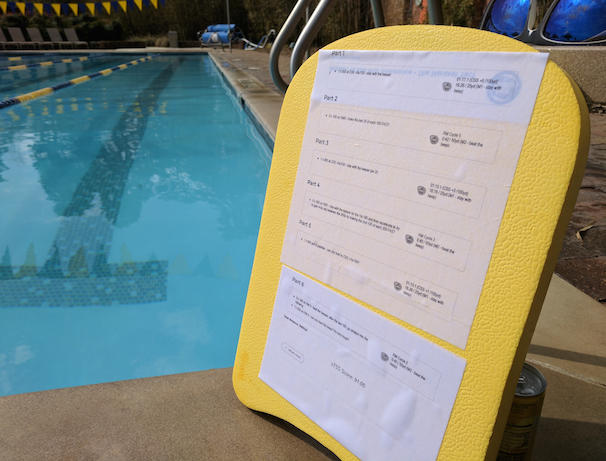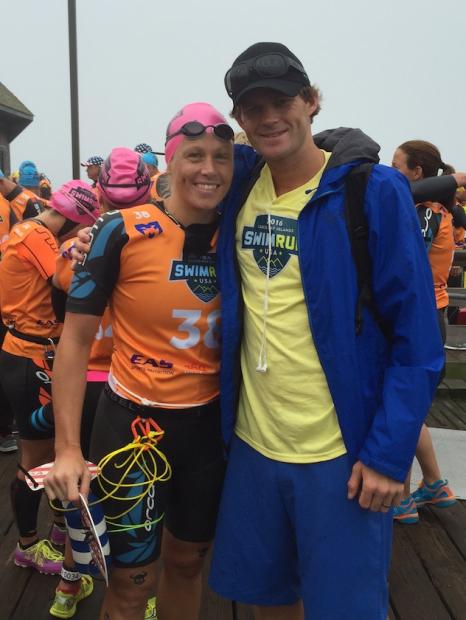
Earlier this year I became inspired after reading about Finnish serial entrepreneur, Sami Inkinen. The Finn is most widely recognized as a co-founder of the on-line real-estate site Trulia which sold to Zillow in 2014 for $3.5 billion. Outside of his business pursuits, Inkinen had a penchant for tackling monumental endurance feats and was relentless in his approach of challenging, and debunking, training and racing truisms. Indeed, he found success on the triathlon course, but even more impressively, together with his wife he rowed from San Francisco to Hawaii fueled by fats and protein, no sugars and few carbs. Many of his stories are chronicled on his personal blog but he has also been featured on Slowtwitch in the past too.

Inkinen trained one discipline on most days, and liberally took days off in order to achieve complete recovery, and focused on high quality sessions, with an eye towards hitting target numbers. His approach of no more than 12 hours per week of training paid off as he finished as the overall runner-up amateur in Kona in 2011 in 8:58. That same year he was also the overall amateur winner of Wildflower and Ironman 70.3 Worlds on a similar race lead up. Inkinen’s on-course success was affirmation there’s more than one way to skin a cat when it comes to training and racing long distance endurance events.
In his triathlon training, Inkinen focused on three main areas including:
Diet (utilizing fat for fuel, eliminating sugars and most carbs)
Higher quality, lower volume training
Optimizing recovery

Inspired by his out-of-the-box approach, I drew up a plan of attack for taking on Ironman Texas, a hometown race for me based in The Woodlands on April 22nd. Ready to get a start on the program, I shared with my wife my plans to tackle it on this paltry 12 hour per week plan. As many know, getting your better-half’s blessing is vital prior to bucking up on the race entry. Instead, to my disbelief, she shot down the plan. As a competitive age-grouper, and former pro, she knew the typical time and training volumes most triathletes dedicate toward tackling big events like an Ironman. She was not convinced I could refrain from engaging in secret training tactics to get in extra miles, and would subsequently miss out on family time with her and our two young daughters. Fair point.

With my plan on shaky ground, I needed an extreme makeover in order to get her buy-in.
My revised pitch of 9 hours of training per week over the 9 remaining weeks leading into race day was green-lighted by the boss! To scratch my inner competitive itch, I have an ambitious goal to see how this training approach stacks up to previous personal best times over the distance.
But, wait, there’s more.
There were additional parameters placed. I was not to “disappear on the weekends” or bail on family commitments in order to train. And, if I was caught engaging in any secret training sessions above the nine hour weekly allotment, the deal was off, end of story.

The basic framework of my approach is simple.
Swim: 3 hours per week using the pool to build fitness. Using a Finis tempo trainer and programs written by Texas-based Swim Smooth certified coach Gemma Hollis. I never enjoyed swimming until Hollis checked out my stroke and gave me a few helpful pointers 18 months ago. I was the token groveler who avoided the pool at all costs but after a video analysis session with Hollis along with a few easy-to-follow pointers, I was reincarnated as a pool rat.
Bike: 4 hours per week using TrainerRoad and the low volume cycling portion of their 8 week “Full Distance Triathlon Build” with guidance and insight from one of their coaches, Jonathan Lee. Depending on the week, and in order to not exceed my total training allotment, in all likelihood I will skip the longer aerobic ride on the weekend. The goal here is to utilize high quality sessions. No fluff. In a previous life, I spent time cycling outside, but will be exclusively indoors to optimize sessions. Pros and cons to indoor training is a hot topic often dissected in the reader forum.
Run: 2 hours per week with a few shorter interval runs and one longer tempo run. The goal is to maintain muscle memory and stay free of injury.

Over the next eight weeks, including seven weeks leading up to race day, and one post race recap, this column will include my perspective on the training, and likely an entertaining story or two along the way, and whether this hack-an-Ironman approach has legs or if it was simply a hair-brained idea and will blow up in my face.
About me: Slowtwitch’s sales guy the past six years while re-inventing myself each year as a cyclist, swimrunner or triathlete based on whichever event most motivates me to stay active.



